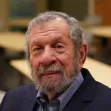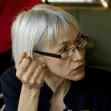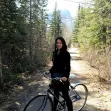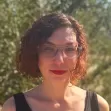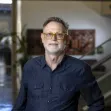Creative Placemaking

Creative Placemaking a Boon for Underserved Communities, Report Says
The work of Chicago urban planner and developer Theaster Gates provides a proof of concept in a new report from the Urban Land Institute.
Communicative Arts Academy: Rebuilding Compton for Artists and Community Life
In the 1960s-70s, a group of artists called the Compton Communicative Arts Academy renovated buildings across Compton and transformed vernacular, underutilized structures into venues for and objects of art.

Creative Placemaking's Role in Enhancing Community Safety
Efforts across the country show that these projects have the added benefit of improving community safety.
Regrets of an Accidental Placemaker
My pitches for space usually centered around the developer’s needs and not the needs of the neighborhood or its residents. I didn’t pay much attention to what impact those events would have on the surrounding neighborhoods.
Art in the Face of Gentrification
Art and culture tend to be integral to helping disenfranchised communities self-identify, develop their identities, and organize around place-based issues. But its presence can also be used be used by real estate interests to market neighborhoods.

Preserving the Character of Little Tokyo
In the wake of rapid gentrification, an organization in Los Angeles is leveraging the arts to celebrate a community's rich heritage and keep social equity a priority.

A Twitter Feed that Sings About Placemaking
"My twitter stream is alive with the sound of placemaking," writes Chuck Wolfe. While preparing for this week's Placemaking Week in Vancouver, he explains the importance of PPS-led programming and hopes for various panels, proceedings and events.
Creative Placemaking: Lead, Follow, AND Get Out of the Way
For governments and institutions, creative placemaking means knowing when to let go. Scott Doyon explains.

Whose Comfort Matters in Public Spaces?
In overhauling the appearance and ambience of a popular mall, the Minneapolis Downtown Council and the Minneapolis City Council have promoted strategies beyond heavy-handed policing, including philanthropy, social services, and community engagement.

Are Small Towns the Next Arts Districts?
As rising costs expel artists from urban cores, some small towns are positioning themselves as unlikely magnets for creative expression.

On the Natural Urbanism of East L.A. Artists
The planning process often suffers from a lack of community engagement. According to James Rojas, planners can learn from the on-the-ground urbanism of artists in East L.A.

Creative Placemaking: Preserve, Repair, Intensify
Many cities have long been investing in art and culture, marrying it to placemaking, and generating extraordinary local transformations. Hazel Borys offers up a little inspiration from an art opening this week, and a few pointers for urbanists.
Using Music to Create Community
Can outdoor concerts transform a neglected place into a beloved city center? "Creative placemaking" is trendy now, but Levitt Pavilions, a national non-profit, has been making places vibrant by building outdoor concert venues for seven years now.
Celebrating Public Art: Chicago in the Summer
What's better than a great plaza in the summer? Some compelling public art to go along with it.
Technology, Talent, and Tolerance: The Creative Culture
Creativity isn’t a theory about hipsters and the latte set. The key driver of a resilient economy is the same thing that binds us as humans – our shared creativity. Hazel Borys reviews Richard Florida's latest creative culture ideas.
54 Arts Projects Awarded Creative Placemaking Grants
ArtPlace America has announced the 54 recipients (out of over 1200 applicants) for its most recent round of creative placemaking grants. The $15.2 million in grants will support projects in 44 communities and a statewide project in Connecticut.
America's Top Small Town Art Scenes
ArtPlace, the creative placemaking collaboration, has announced its inaugural list of the top small town art scenes in the United States. The dozen communities selected for recognition include Crested Butte, CO, Vineyard Haven, MA, and Taos, NM.
To Create a Great 'Third Place', Get Out of the Way
For far too long, the shaping of public spaces has been left to architects and urban planners, who plan from the top down. The most successful projects involve people directly in deciding how their public spaces will look, feel, and operate.
Participation Makes for Successful Placemaking
In a compelling entry into the public dialog around placemaking, Project for Public Spaces argues that people, rather than merely places, create vibrancy in a community.
Lessons Learned: Five Principles of People and Place
Employing material gathered for his forthcoming book, Chuck Wolfe argues for layered, historical illustrations of how people relate to built and sociocultural communities around them, and offers 5 principles and companion lessons for placemaking.
Pagination
Urban Design for Planners 1: Software Tools
This six-course series explores essential urban design concepts using open source software and equips planners with the tools they need to participate fully in the urban design process.
Planning for Universal Design
Learn the tools for implementing Universal Design in planning regulations.
Caltrans
City of Fort Worth
Mpact (founded as Rail~Volution)
City of Camden Redevelopment Agency
City of Astoria
City of Portland
City of Laramie


























